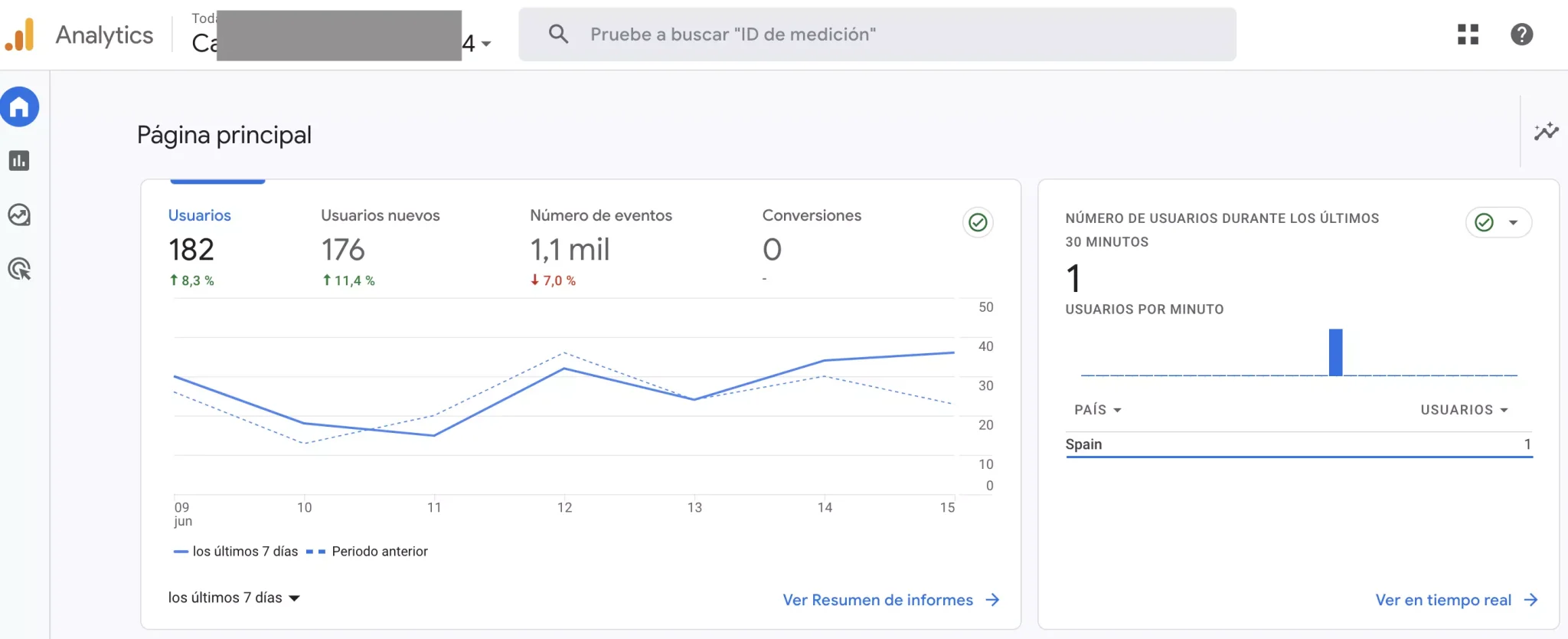
In this article I want to talk to you about a fundamental topic for any digital project: the Web Analytics.
Understanding and taking advantage of the data we generate has become crucial. In this post, we will detail what web analytics is, what it measures and how it works, as well as some practical examples to facilitate your understanding.
What is web analytics?
Web analytics refers to the process of collection, measurement, analysis and visualization of data related to user activity on a website or mobile applicationfor subsequent decision making.
In other words, it involves understanding how visitors interact with a site or application, with the goal of improving user experience, increasing conversion, and optimizing overall project performance.


Instead of using intuition, we rely on measurements, so it is important to use of specific tools and techniques to collect data, such as tracking tags, cookies and tracking pixels. These mechanisms allow us to track and record user activity, such as pages visited, time spent, actions taken, conversions, how many people have visited our site again, and more.
After, This data is processed and analyzed to extract relevant and valuable information that can support strategic decision making. That is, it is about avoiding the “I believe that…”, and replacing it with “we have observed that…”.
What does web analytics measure?
Web analytics measures a wide variety of metrics and KPIs (Key Performance Indicators) to evaluate the performance of a website or application.
Some of the most common metrics are the following:
- The number of visits
- Page views
- bounce rate
- Dwell time
- Conversions
- Conversion funnels (for example, in which phase of the purchasing process we lose customers)
- Origin of traffic (such as socio-demographic data)
For example, bounce rate It tells us what percentage of users leave the site after visiting a single page, which can be an indication that something is not working correctly. Let’s take the case of a person who enters the eCommerce category, but leaves without adding any product to the cart. From here, we will have to plan a strategy that encourages conversions.
In addition to these basic metrics, web analytics also allows us perform more advanced analysissuch as tracking specific events, analyzing user segments and measuring the ROI (Return on Investment) of our marketing actions.
However, it is important that you always keep one thing in mind, and that is that those data that do not help us improve are noise.
We cannot expect to measure absolutely everything, even when those metrics will not influence us at all in decision making. If we measure something, it must be because it will help us improve business performance.
How does web analytics work?
Web analytics works through a process that consists of various stages:
- Define what data we want to measure and what objectives we pursue.
- Implementation of data analysis tools.
- Compilation of relevant data.
- Analysis of the collected data.
- Visualization of the results in a clear and understandable way.
- Data-informed decision making.
Next, we will go on to detail each of the steps of the process.
Define what data and objectives we pursue
Before starting to collect and analyze data, it is important to be clear what are the objectives of your digital project.
Based on these objectives, it defines what metrics are relevant to evaluate your success, such as conversions, time on site, bounce rates, etc. because everything else will not be relevant for subsequent analysis in decision making.
Implementation of data analysis tools
As we have mentioned before, first of all analysis tools are implemented, like Google Analytics. These tools allow you to collect data on user activity.


It is important to correctly configure tracking tags and events to collect relevant information accurately, as well as establish what do we need to measure. We insist that there is no point in measuring everything, and it will only cause chaos.
Collection of useful data
Once the web analytics tool has been configured, it begins to collect data about user interaction with the website or app.
This includes information such as pages visited, actions taken or conversions, which are stored in a database and prepared for analysis, which will be the next point.
Analysis of collected data
And data analysis is a key stage in web analytics. In this step, it is time to apply analysis techniques and tools to discover patterns, trends and relationships in data. In the case of massive data processing, we would be talking about Big Data.
For this analysis, techniques such as user segmentation, conversion funnel analysis and cohort analysis are used to obtain valuable information about user behavior and the effectiveness of the implemented strategies.
Data visualization
Once we finish identifying the insights or keys of the analysis, it is important display data clearly and understandably. This is achieved by creating reports and graphs that present data in a visual and easy-to-interpret manner.


These reports allow decision makers Get a clear view of site or app performance and take appropriate measures to improve, which would be the last point of web analytics.
Decision making based on the reports presented
As a good data analyst, you must use the analyzes presented to support your decisions. Avoid basing your decisions solely on intuitions or assumptions, as that would conflict with the objective pursued by this discipline.
Instead, use objective data to support your arguments and make sure you are making informed decisions and, above all, keep in mind that web analytics is a continuous process.
Continue to regularly monitor your metrics and data, make adjustments when necessary, and stay on top of trends and changes in user behavior.
Examples of web analytics
Now that we’ve seen what web analytics is, what it measures, and how it works, it’s time to look at some practical examples of how it’s applied in the real world.
Let’s imagine that we own an online store and we want to improve the conversion rate of our site. Using web analytics, we can analyze the conversion funnel, identify shopping cart abandonment points, and perform A/B testing to test which version of the website would perform best.
Another example would be the analysis of the origin of the traffic. If we have a blog and we want to increase the number of visits, we can use web analytics to identify which traffic sources are generating more visits and which are less effective (Google, email marketing, Instagram, Facebook, Twitter…), as well as what Types of articles usually bring us a greater amount of traffic.
These are just two examples of how web analytics can help us understand and optimize our online performance, but we can go much further. The key is to know What data should we measure, and how to treat it for strategic decision making.
Finally, if you want to learn more about Big Data and data analysis, we recommend taking our Master in Web and Digital Analyticsand where you will delve into tools and processes to make better strategic decisions.
And you, what do you like most about web analytics? What uses do you give it? We read you in comments!
Podcaster at Campamento Web, the most listened to Spanish-speaking SEO news and interview program for more than 5 years. Also, creator of Clave Podcast, the podcasting portal to train you as a podcaster. Graduated in Communication from Loyola University and SEO consultant, although currently focused more on his own projects focused on the field of communication and web positioning.
Source: https://www.marketingandweb.es/web/que-es-la-analitica-web/


